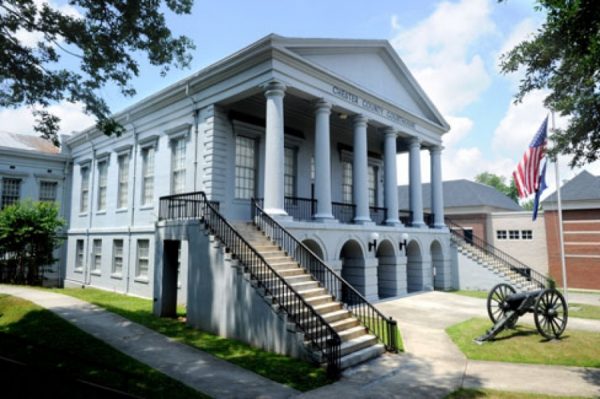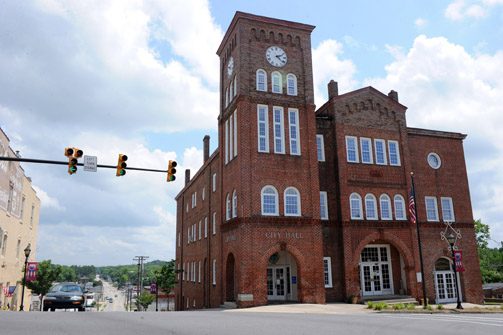Chester County: An introduction

Introduction: To visit Chester County, just 30 miles south of Charlotte, is to enter another world. Geographically so close, these two places couldn’t be more different. Chester faces greater economic and social challenges than any other county in the Charlotte region, and to pretend otherwise would risk leading Chester’s more prosperous neighbors to ignore this beautiful county that has so much to gain from building closer economic and cultural ties to the rest of the region. In fact, if one of the measures of a successful, multi-county economic region is its ability to lift the fortunes of its more remote parts, then Chester stands as a reminder that there is still much work to be done in the greater Charlotte region.
Historical Overview: Excerpted, with permission, from the website of the South Carolina State Library. The same information can be found at http://www.statelibrary.sc.gov/chester-county.
“Chester County and its county seat, the city of Chester, were named for Chester County, Pennsylvania. The county was formed in 1785 as part of the larger Camden District but was later transferred to Pinckney District (1791-1800); it became a separate district in 1800. Scotch-Irish settlers from Pennsylvania and Virginia moved into this upstate region beginning about 1755. During the Revolutionary War, American forces under General Thomas Sumter were defeated here at the battle of Fishing Creek in August 1780; the Americans were victorious at Fishdam Ford in November of the same year. The Landsford Canal was built in 1823 to allow boats and barges to bypass rapids on the Catawba River; this canal is now open as a state park. In later years the availability of hydroelectric power encouraged the establishment of textile mills in the area. South Carolina governor, United States senator, and judge Donald S. Russell (1906-1998) lived in Chester as a boy.”
Chester Today: Along the banks of the Catawba River in eastern Chester County, Landsford Canal State Park is a monument to the Charlotte region’s earliest development during the first quarter of the 19th century, when the vision of creating a network of locks and canals along the Piedmont’s shallow and rocky rivers was the economic equivalent of building an interstate highway system today. This was an era when water transportation was still the most important infrastructure for economic development, and without better access to the ports of Charleston and Georgetown, Piedmont communities along the Catawba, Broad and Yadkin-Pee Dee Rivers had little hope of becoming anything more than economic and cultural backwaters. This was before the arrival of the railroad, and leaders of communities along the region’s great rivers frequently developed plans for making their waterways more navigable with systems of manmade locks and canals.

Unlike places further up the East Coast, where canals played important roles in the early development of states like Pennsylvania and New York, not many of these plans ever came to fruition in the Carolinas before the railroads came along and made them obsolete. The fact that Landsford Canal was actually built, and in operation for more than a decade, is testament to the prominent role that Chester once played in the Charlotte region’s development. In fact, Chester was an important gateway along the Catawba River to the Carolina Piedmont before the arrival of the railroads, and by the dawn of the Civil War it trailed only York County in population among the fourteen counties that today comprise the Charlotte region. Soon afterwards, however, Chester was surpassed by other Piedmont communities that more aggressively capitalized on the development of America’s rail system to establish themselves as major centers of industry and commerce.
Today, Landsford Canal’s ruins are a reminder of the important role that investments play in the development of any community, whether in the form of infrastructure such as highways and rail, or human capital-focused investments such as education. As Chester County strives to adapt to an ever- changing global economy that has greatly diminished the county’s traditional textile industry, the need for new investments to help breathe life back into this proud old county are greater than ever. Chester’s unemployment rate has consistently ranked as the highest in the Charlotte region for a number of years, hovering above 20% for an extended period during 2009 before dropping to around 17% in the summer of 2010. Poverty rates have remained among the highest in the region, while educational attainment and SAT scores have consistently ranked among the lowest.
Like other counties in the Charlotte region that comprise that second ring of communities beyond Mecklenburg’s “border counties”, Chester has not yet experienced the spill-over growth from Charlotte that so often serves as a stimulus to further growth and economic diversification. Yet, in an advantage it has over Anson and Stanly counties in North Carolina (similarly-situated geographically to Charlotte), Chester at least has the benefit of having a direct interstate highway connection to Charlotte through Interstate 77. That connection represents a promising opportunity for Chester, made even more so by its direct link to Columbia, SC. In fact, Chester is about halfway between Charlotte and Columbia along Interstate 77, and given the importance that the interstate highway system plays in today’s economic world, one would have to conclude that the first major investment in Chester’s economic recovery has already been made, and is just waiting for the right mix of leadership and policy to capitalize on it.
Other investments will be equally important for Chester to take full advantage of its central location. Education and workforce training will be critical for this county that regionally ranks at or near the bottom of nearly every measure of workforce preparedness. In terms of quality of life, more could probably be done to make the most of what is one of the region’s most accessible collections of natural and cultural resources, including Chester’s status as the only county in the region with two state parks and a national forest in Landsford Canal State Park, Chester State Park and portions of the Sumter National Forest. The county’s strong agricultural sector is already developing a reputation for agri-tourism, with Cotton Hills Farm in Lowrys setting the standard. And the county seat of Chester is as lovely a village as one will find in the Charlotte region, with its historic downtown situated on a high prospect overlooking verdant, wooded hills.

Back at Landsford Canal, one of the Charlotte region’s most beautiful spectacles unfolds every May when the Rocky Shoals Spider Lilies burst forth with their annual display of white flowers, which seem to pile up like snowdrifts along the rocky outcroppings of the Catawba River. Home to one of the largest concentrations of this rare, native lily found anywhere in the southeastern U.S., this annual show draws visitors from far away to witness the Carolina Piedmont at its finest. How appropriate that, at a site symbolic of Chester’s past economic booms and busts, nature has taken over the show, demonstrating the enduring power of Chester’s natural beauty to draw people back to this county that “progress” seems to have ignored for more than a century. — Jeff Michael
Photos by Nancy Pierce
Chester County links
Chester County Articles & Publications







